|
I have killed a lot of plants over the years.
We revere or envy the gifted gardener, giving them the title of Green Thumb. A failure or two, and we dub ourselves Black Thumbs, expecting to impart the kiss of death on anything we try to grow. Truth told, every experienced, successful gardener has composted his or her share of plants. Houseplants are the most personal. We bring these plants into our home, away from any sustenance that would normally be provided by nature, like rain or sun. When they fail to thrive, it’s pretty much our fault. The number one killer of houseplants is overwatering. I know this. I do my best to educate others. Yet I would admit that any houseplant that has died at my hands has been caused by poor watering practices. Rarely do I overwater, but occasionally it has happened to those beautiful blooming holiday plants like poinsettias or mums. Thirsty and pot-bound, frequent wilting prompts a pre-emptive water-when-you-see-it mentality. Unfortunately, one of the symptoms of root rot from excess water is wilting. If I forget to check, I add more water to a drowning plant, and it’s soon headed to the compost pile. Under-watering is an overcompensation, but equally deadly. And my kill-list is an embarrassing list of plants that are well-known to be virtually indestructible. Cast Iron plant is typically well-named. Aspidistra elatior earned its common name for a tough constitution that was able to withstand the cold, toxic air of Victorian homes polluted with the fumes from coal heat and gas lighting. Mine recovered several times from severe wilting, but eventually succumbed. Mother-in-law’s tongue or Snake Plant, aka Sansevieria, has an iron constitution and a reputation to match. I have a plant that was at least 10 years old when it came under my care. This plant is a survivor. When Marty’s mom, Fran died in 1977, dad put the plant in the basement. Months later, Marty found the plant and started to care for the plant. This particular mother in law’s tongue has grown and thrived for another 30 years since I have been its care giver. But I have also killed some. I found a bargain on a compact Sansevieria variety called Birds’ Nest, which grows in a tidy, compact rosette of leaves. I bought several and placed them under fluorescent lights in the basement, planning to propagate them and sell at a garden club plant sale or farmer’s market. Despite their reputation for thriving on neglect, these plants, to the contrary, died from it. I’ve actually killed more so-called indestructible plants than the more fragile ones. These plants have such a reputation for being able to take care of themselves that I sometimes don’t take care of them at all. I don’t feel quite as personally responsible when a plant fails in the landscape. These plants receive nature’s care from the wind, sun and rain, and are also subject to the perils of insects, disease and hungry, browsing wildlife. Of course, sometimes failure is entirely my fault. I put a plant where I’d like to see it, out of the reach of the garden hose and easily forgotten. Or I tuck a very small starter plant into an established planting, and it gets crowded out before it has a chance. And I push the limits, putting a moisture-loving plant in a dry spot, a sun-lover in the shade, and believe the advertisement that says that THIS variety of tropical plant is hardy in Michigan. Occasionally these experiments take, and I enjoy bragging rights. Occasionally. A Green Thumb has lots of lush, beautiful plants. If one fails or falters, we learn from our mistakes and replace it with something new. When someone compliments us on our abundant gardens, we smile wisely and do not mention the skeletons in the compost pile.
43 Comments
Successfully bringing art into the garden is a delicate balance, finding the right proportion of plants to decoration.
Wherever your balance lies, objects that are both utilitarian and attractive are a good starting point. Familiar examples include garden benches and other seating, bird feeders, bird baths and rain gauges. Rain chains are a relatively new trend in the US, and I’ve decided to add one to my garden. They have long been used in Japanese gardens and temples as a method to collect rainfall from the roofs of buildings. Bringing sound and motion to the garden space, the rain chain is a dynamic sculpture helping to create a sense of peace and tranquility. A decorative alternative to the traditional gutter downspout, in its most basic form, it is simply a link chain that uses the surface tension of water to guide the stream of rain from the gutter to the ground. As a garden ornament, the chain is often made of a series of cups, linked together so that water funnels from the bottom of the first to the next. The cups can be quite ornamental, in various geometric shapes, and, of course, flowers. Best quality chains are made of solid copper and last for many years. Standard length should be at least eight feet, to ensure that it reaches from the gutter nearly to the ground on a single story home. Like a traditional downspout, you’ll need to do something with the water once it’s been channeled to the ground. A splash block will work, but aesthetically, a grouping of decorative river stones is better. Consider placing a waterproof liner beneath the stones to direct the water to a rain garden, water garden or simply away from the building’s foundation. Rain chains can also guide roof runoff to a rain barrels. In this scenario, you won’t need to full eight foot chain length, but it is possible to separate it into two sections and feed two barrels. A decorative container can also be used to capture rainwater for other uses, but you may need to use controls to prevent mosquito breeding in standing water. Installation is fast and easy. The chain starts with a v-shaped open link, which will rest across the opening in the gutter, and provide a place to hook the chain after you’ve removed the downspout. To work properly, the chain must hang straight down, not follow an angled path. If you don’t have gutters on your roof, you’ll need to devise another method to channel the water to feed your chain. When considering a rain chain for my garden, I was concerned about its ability to endure our winter conditions. I wanted something I could enjoy year-round. To reinforce the gutter and help support the weight of winter’s ice, most sources recommend using a gutter installer or reducer—a copper flange that rests in the standard gutter opening and narrows it to a smaller one more in line with the width of the cups in the chain. With this added step, the chains may be left in place through the ice and snow, and can become a dramatic ice sculpture as the copper skeleton becomes encased in ice. You may also knock off any heavy ice buildup if it causes concern. I ordered my rain chain online, from www.rainchainsdirect.com and was pleased with the quality and selection. The website includes videos of the product in action, detailed information and suggestions for getting the most from your rain chain. I am optimistic that it will do well through our snowy winter and the icicle accumulation of thaws. Some of the icy art that formed on the chain so far will be seen in the photo page. This week I’ll conclude my review of the latest All-America Selections winners.
Until 2015, only seed-grown plants were eligible for consideration for an award. Cutting-grown plants have become much more prominent in our gardens in recent years, and as the assortment increases program leaders felt that the AAS trial process would also help identify the best garden performers in this class. The first-ever winners propagated from cuttings are impatiens hybrids. Plant breeders have been scrambling to find alternatives to Impatiens walleriana, stricken in recent years by a new and devastating mildew disease. Both of these hybrids are improvements over the New Guinea impatiens, with similar flower size and foliage, but increased vigor and more profuse flowering in shade. Bounce Pink Flame has large pink flowers with a bold magenta streak in the center of each petal. Plants have an incredible ability to bounce back from wilting. SunPatiens Spreading Shell Pink is covered with flowers through the season, in sun or shade. Vigorous plants establish quickly and thrive even in heat, rainy weather and humidity. Petunia Trilogy Red sports large, vibrant, non-fading flowers that bloom nonstop—without cycles of bloom and rest—creating an impressive display in planters and hanging baskets. Salvia Summer Jewel White is the third color in a series, joining past AAS winners red and pink. Like its siblings, it provides an impressive display of densely-flowered spikes on compact plants. Individual blooms are larger than other salvias of the same type, and were favored by butterflies, hummingbirds and bees. The remaining seven winners for 2015 are in the vegetable category. Sandy is the first lettuce to take an award in nearly 30 years. Sweet, tasty deep-green lobed leaves are resistant to powdery mildew and slow to bolt. Harvest as a cut-and-come-again or allow plants to form loose heads. Roxanne radish produces bright red roots with crisp white flesh and good flavor. Texture is good even if it gets oversized, staying firm with no pithiness. Harvest 27 days from sowing. We expect zucchini to be prolific, and Bossa Nova will not disappoint. Plants stay compact and in trials produced up to three weeks longer than other varieties. Light gray-green fruit are easy to spot, making it easy to harvest thoroughly and prevent unwanted gunboats. Butterscotch is a butternut-type winter squash with petite six-inch fruit weighing about 1.25 pounds each. Flavor is sweet and nutty. A nice assortment of peppers rounds out the options. Emerald Fire jalapeño produces extra-large, 3.5 inch long fruit that’s flavorful and has the classic heat of its class; ideal for stuffing, grilling or salsas. Compact plants produce abundant yields of deep green, thick-walled deep green peppers about 90 days from transplant, and will mature to red. Fresno-type peppers tend to be fussy growers and need a dry hot summer to perform well. Flaming Flare breaks the mold, giving us an opportunity to try it in our gardens. Sweet, spicy, tapered fruits reach nearly four inches long. Harvest red 75 days from transplant, and fruit left longer on the plant will develop more heat. Pretty N Sweet pepper looks as good as it tastes. Compact plants each provide up to 100 sweet, tasty 1.5 inch mini-peppers that mature to shades of yellow, orange and red just 60 days from transplant. Grow it as a decorative plant or in the vegetable garden. Dolce Fresca is a sweet basil with a tidy, mounded shape and large, attractive foliage. Great tasting leaves are perfect for pesto and sauces. Start harvesting just 20-28 days from seed, and pinch off flower buds as they form to prolong the season. Keep all of the AAS winners in mind as you plan your 2015 garden! |
AuthorsJulie has worked in the horticulture world for over 25 years. She has a degree in English Literature from University of Michigan. She is a member of the American Garden Writers Association. Archives
November 2017
Friends in the business
We recommend the plants and services offered by Nash Nurseries. Categories
All
|

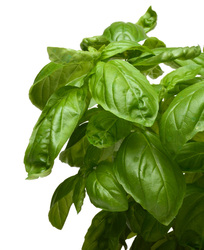
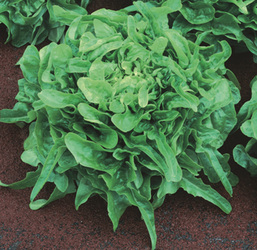
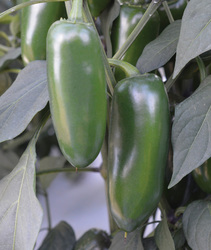
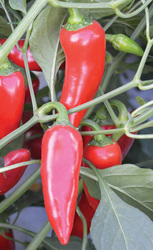
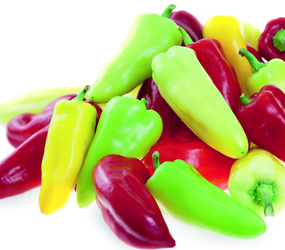
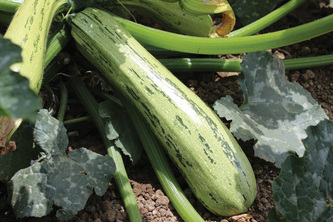
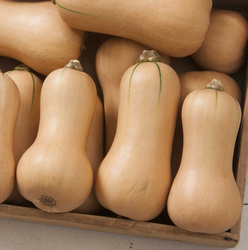
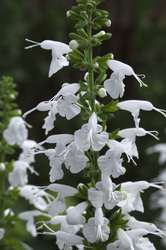
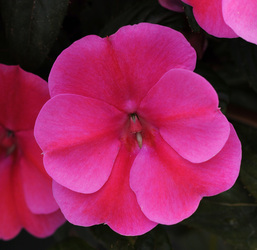
 RSS Feed
RSS Feed